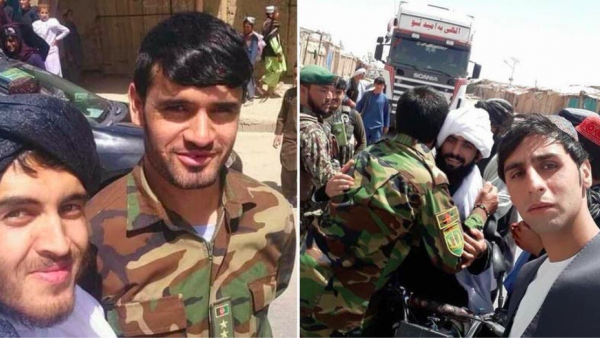Secretary of State Mike Pompeo landed in Qatar’s capital city, Doha today for the signing of a peace deal with the Taliban. In a rare demonstration of presenting both sides of a contentious deal the Washington Post opinion section featured dueling pieces that capture this unique moment in time. The peace deal is a clear win for both the Trump administration and the Afghan people. As usual the devil is in the details but it appears we are on the way out of Afghanistan.
Barnett Rubin who is a senior fellow and associate director of the Center on International Cooperation of New York University and non-resident senior fellow at the Quincy Institute, outlines the agreement in his WaPo OpEd.
The agreement provides a timetable for troop withdrawal, counterterrorism guarantees, a path to a cease-fire and a process for political settlement. Implementation would also require dismantling Taliban infrastructure in neighboring Pakistan and assurances by external powers that none will use Afghanistan against others.
Mr. Rubin has considerable time on the ground in the region and his take on the peace deal (which is it is a good deal) is identical to mine.
Max Boot, who is a Jeane J. Kirkpatrick senior fellow for national security studies at the Council on Foreign Relations, took the opposite view. In his WaPo OpEd he outlines three different scenarios for the near future in Afghanistan. He then goes onto to predict the worst case scenario (the Taliban rolling into Kabul and taking over the country) as the most likely. I can tell you unequivocally that is the least likely scenario.
Many of our foreign policy experts and more than a few of my friends caution that the Taliban is not a cohesive monolithic organization, and that negotiators are only speaking for the Quetta, Peshawar, and Miranshaw Shura’s. This is a fact that is true, but means nothing now. The Taliban were able to enforce the peace during last years Eid celebration across the country and I believe they can do so again. Regardless of what I and my friends believe the only thing that counts is how the Afghans feel about the deal.

The Senior Vice President-elect of Afghanistan, Amrullah Saleh, published his opinion on the Time website. I Fought the Taliban. Now I’m Ready to Meet Them at the Ballot Box is the title of his piece and that’s a strong endorsement of the process. Amrullah Saleh is the former head of the National Directorate of Security (NDS), a former Interior Minister and he survived a serious assault on his election headquarters last July. That assault started with a car bomb and was continued by suicide vest equipped assault teams. Amrullah Saleh survived by jumping off the roof of his four story headquarters onto the roof of a neighboring building.
It is reasonable to assume Mr. Saleh had engaged in a running gun battle before escaping to safety, he is that kind of guy.
In another fascinating development the Military Times published an article today with the headline ISIS taking a beating in Afghanistan setting the stage for a potential a U.S. troop withdrawal. Buried deep in the article is this:
The recent campaign in Nangarhar is one example. Effective operations by US/Coalition & Afghan security forces, as well as the Taliban, led to ISIS-K losing territory & fighters. Hundreds surrendered. ISIS-K hasn’t been eliminated but this is real progress,” Khalilzad tweeted Tuesday
Remember a few posts back I highlighted this article in the Washington Post about the defeat of ISIS because it failed to mention the Taliban’s direct role? It seem like the first draft of history is up for grabs regarding the defeat of ISIS-K in Eastern Afghanistan. There is little to gain but much to lose in suppression of the truth. I doubt an experienced reporter would have not known about the Taliban’s role in fighting ISIS-K so it is hard to figure out why the WaPo would print such obviously fake news.
Regardless, ISIS is now gone in Eastern Afghanistan and the remaining pockets in the north now the problem of the Taliban. Who seem to be very efficient at rooting them out.
What I cannot determine is how many troops will stay and what those troops will be doing. If the plan is to leave the Combined Joint Special Operations Task Force – Afghanistan (CJSOTF-A) in place to hunt down ISIS and al Qaida that is not going to work. ISIS doesn’t need to be serviced by us any longer and separating al Qaida trainers from Taliban students is impossible.
If Amrullah Saleh is willing to give the Taliban a chance, and they reach an agreement, men like Sirajuddin Haqqani, who have been at the top of the JPEL for years, will be allowed to go in peace. The JPEL is the Joint Prioritized Effects List which is essentially a lethal version of the FBI’s most wanted. Allowing the men on that list to walk free, get passports and travel is going to be a bitter blow to the people who have been hunting them. But that may be the price of peace.
I have to add that CJSOTF-A is not going to be able to operate behind the back of the Senior VP. Mr. Saleh has decades of experience working with the CIA and CJSTOF and he will have a say on what the Americans can and cannot do if they leave CJSTOF-A in Afghanistan.
This deal with the Taliban is how it ends. It is the only way it can end. The only question in Afghanistan was when, not if, we were leaving. The Taliban cannot beat the Kabul government in battle. The Kabul government cannot beat the Taliban in battle. The continued presence of American SF teams, tactical aircraft and trainers brought the Taliban to the negotiating table which is the best they could do. It is up to the Afghans to decide what happens next. It is also time for us to leave.



Inshallah!